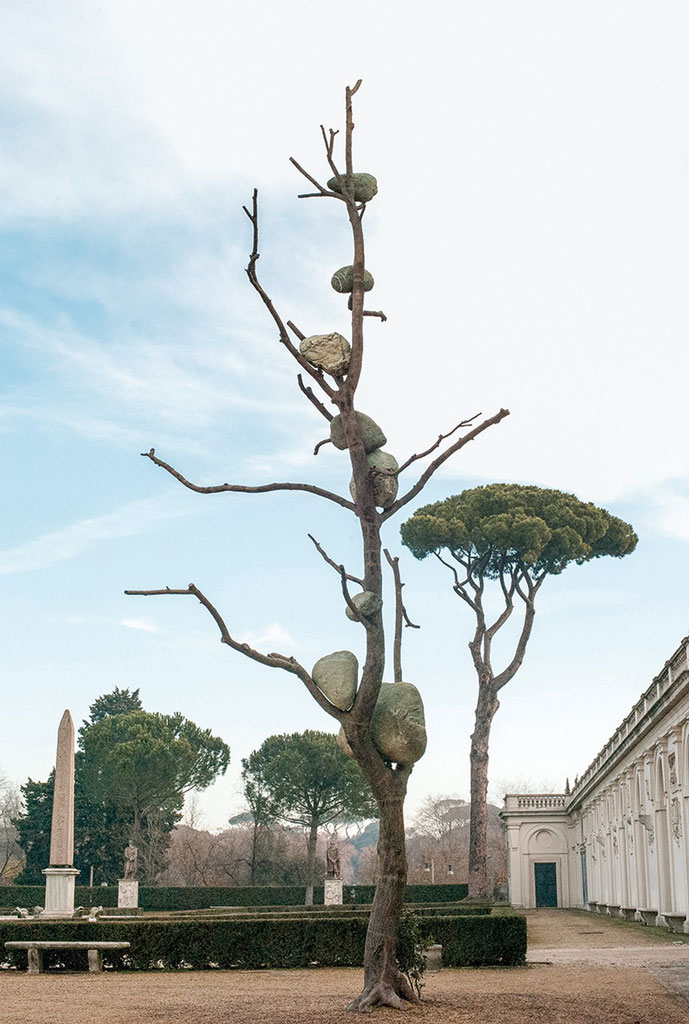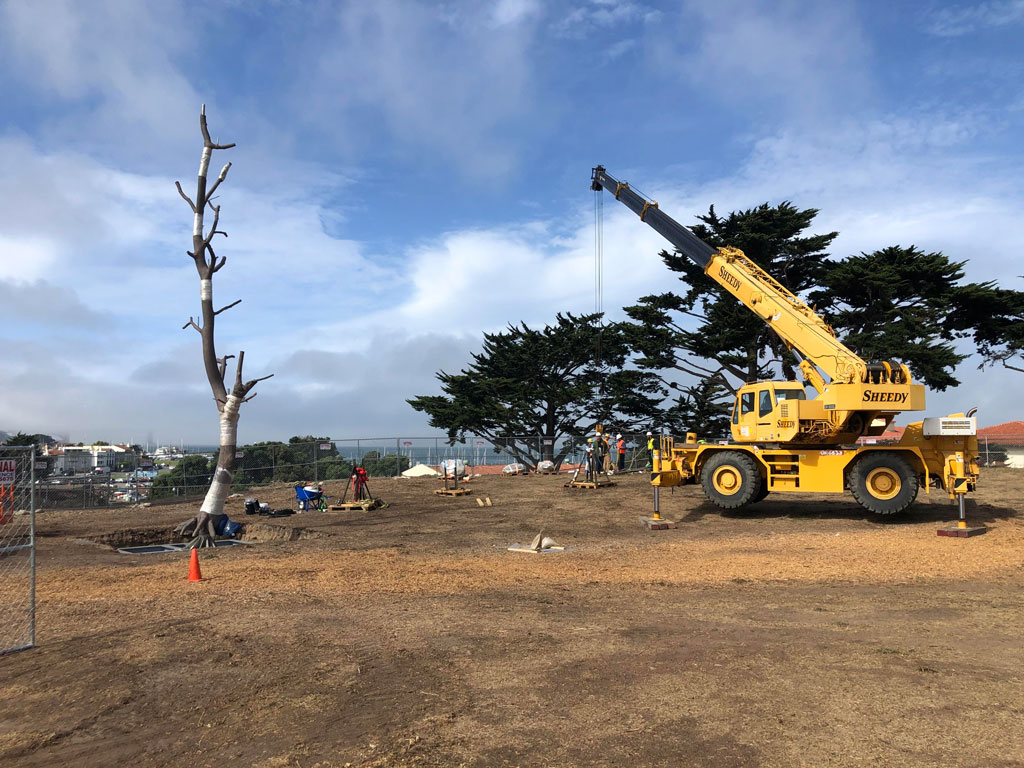ART-PREVIEW: Giuseppe Penone in Fort Mason
 The Golden Gate National Recreation Area and the Parks Conservancy have partnered with Gagosian Galery to present a year-long outdoor installation by Giuseppe Penone in Fort Mason, a historic site within the Golden Gate National Recreation Area. Penone’s sculptural investigation of the perpetual give-and-take between humans and nature offers a poetic analogy to the evolution of the park itself.
The Golden Gate National Recreation Area and the Parks Conservancy have partnered with Gagosian Galery to present a year-long outdoor installation by Giuseppe Penone in Fort Mason, a historic site within the Golden Gate National Recreation Area. Penone’s sculptural investigation of the perpetual give-and-take between humans and nature offers a poetic analogy to the evolution of the park itself.
By Dimitris Lempesis
Photo: Golden Gate National Parks Conservancy Archive

During Fort Mason’s 200-year-long history as a military fort under Spanish, then Mexican, then United States control, trees were used as a resource, a way to block the strong Pacific winds, build structures, and provide a visual separation between military areas and the rest of San Francisco. Hundreds of trees survive from the military era at Fort Mason. Now within a national park site, these aging trees live where the human-altered landscape coexists with the wild. Giuseppe Penone conceived this installation of two large-scale sculptures in response to the landscape of Fort Mason. The bronze trees on view at upper Fort Mason were cast using molds from actual trees felled by natural causes. For Penone, trees are more than a material or an image; they are “not objects but individuals, with their own life and a shape different from ours but with the same dignity”. By recognizing, altering, re-creating, and interacting with the natural forces and cycles of the environment, he blurs the distinction between our physical selves and the natural world. In each work, a bronze cast of a tree is combined with natural elements, evoking the vital forces and life cycle of the surrounding growth. In “La logica del vegetale” (2012) the tree lies on its side, its gnarled root system exposed. Five living saplings native to California (valley oak, coast live oak, bigleaf maple, and two California bay laurels) sprout at the tips of its sprawling branches. In “Idee di pietra” (2004), large river stones nestle in the high branches of a bronze sculpture cast from a tree, as if weighing down the natural reach of the tree towards the light. The tree stands tall and straight; its narrow silhouette supporting the stones high into the air suggests a force resisting the planetary burden of gravity. From his earliest site-specific sculptures made in the forests around his hometown in Piedmont, Italy, Penone has adapted elements from the natural world, exploring the deep evolutionary interdependence between sculpture and nature across geological time. He was a proponent of the Arte Povera movement, beginning in Italy in the 1960s, which used “poor” and unconventional materials such as soil or plant matter to evoke a preindustrial age and subtly critique systems of industrialization, mechanization, and art. Penone’s earliest works included site-specific sculptures situated in the woods around his Piedmont hometown—the start of an enduring fascination with the arboreal realm that is still prevalent in his work today.
Info: Great Meadow Park at Fort Mason, Bay Street, San Francisco, Duration: 24/10/19-25/10/20, Days & Hours: Daily 8:00-22:00, www.parksconservancy.org

